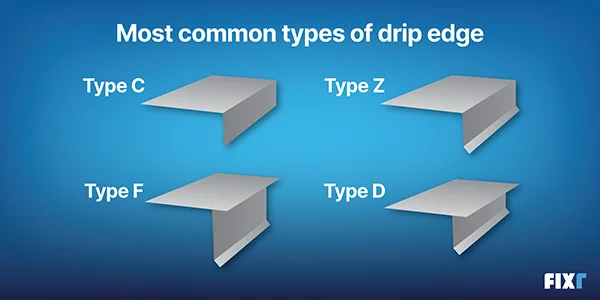Roofing
What is Drip Edge and Is It Necessary for My Roof?

Why Drip Edge Matters: The Importance of Proper Roof Protection
When it comes to roofing, many homeowners overlook the role of the drip edge. Why drip edge matters is crucial to protecting your roof from water damage and preserving the integrity of your home. In this article, we’ll explain the purpose of a drip edge, its types, materials, and how to install one yourself.
What Is a Drip Edge on a Roof?

A drip edge is a vital component of a roof system. It consists of metal or vinyl strips installed at the roof’s edge. The purpose of the drip edge is to direct water into the gutters and away from the fascia and sheathing. Without it, water runoff could cause significant damage to your home’s structure.
Why drip edge matters is simple: it prevents water from backwashing under the shingles, which could lead to rot. When installed correctly, it protects the roof’s deck and fascia, preventing costly repairs.
The Purpose of a Roof Drip Edge
The primary purpose of a roof drip edge is to manage water runoff. Water that falls off the roof should flow into the gutters, down the downspouts, and away from the house. However, without proper channeling, water can seep behind the gutters and damage the underlying roof structure. This leads to the deterioration of essential components like the fascia and deck.
Over time, water infiltration without a drip edge causes rot. By installing the right drip edge, you ensure that water is directed into the gutters and away from critical areas, preserving your home’s integrity.
Types of Drip Edge Profiles

Courtesy of Fixr
Drip edge flashing comes in various profiles, each designed for different purposes. The most common types are C, D, and F profiles. Each offers unique benefits in terms of water diversion.
Type C (L Style)
The Type C drip edge is L-shaped and attaches to the roof deck. One side runs along the roof, while the other extends vertically. This type of drip edge is effective at keeping water flowing into the gutters, especially in areas with minimal wind.
Type D (T Style)
The Type D drip edge, or T Style, features a T-shaped profile with a flange along the lower edge. This type directs water further away from the roof edge, making it ideal for areas with more rainfall. The Asphalt Roofing Manufacturers Association (ARMA) recommends this profile for asphalt shingles.
Type F
Type F drip edge is similar to Type D but has a more extended vertical side. This extra length helps cover the roof deck and more of the fascia board, offering enhanced protection from blowing rain and ensuring that water is directed into the gutters.
Drip Edge Materials

Courtesy of Fixr
Drip edges are made from various materials, each offering different levels of durability. Here are some of the most common materials:
- Aluminum: Lightweight and corrosion-resistant, aluminum drip edges are available in various colors but are less durable than steel.
- Galvanized Steel: Steel drip edges are coated to prevent corrosion and hold up better in strong winds than aluminum.
- Copper: Copper is the most expensive material, but it is highly durable and resistant to corrosion.
- Vinyl: Vinyl is a more affordable option but doesn’t last as long as metal. It’s typically used for areas above windows or doors.
Can I DIY Replace My Drip Edge?
If your roof was installed after 2012, it likely already has a drip edge in place. However, if you need to replace or install a new drip edge, you may wonder whether you can do it yourself.
While installing a drip edge during a full roof replacement is straightforward, retrofitting it under existing shingles can be tricky. You need to avoid damaging the shingles and should be comfortable working on a ladder. To ensure proper installation and avoid compromising your roof’s integrity, it’s best to hire a professional roofer.
Explore More Roofing Tips and News
Understanding why drip edge matters is essential to protecting your roof and home. By installing the right drip edge, you safeguard against water damage and ensure long-lasting roof protection.
Explore more news on this website to stay informed about roofing tips, home improvement ideas, and more!
